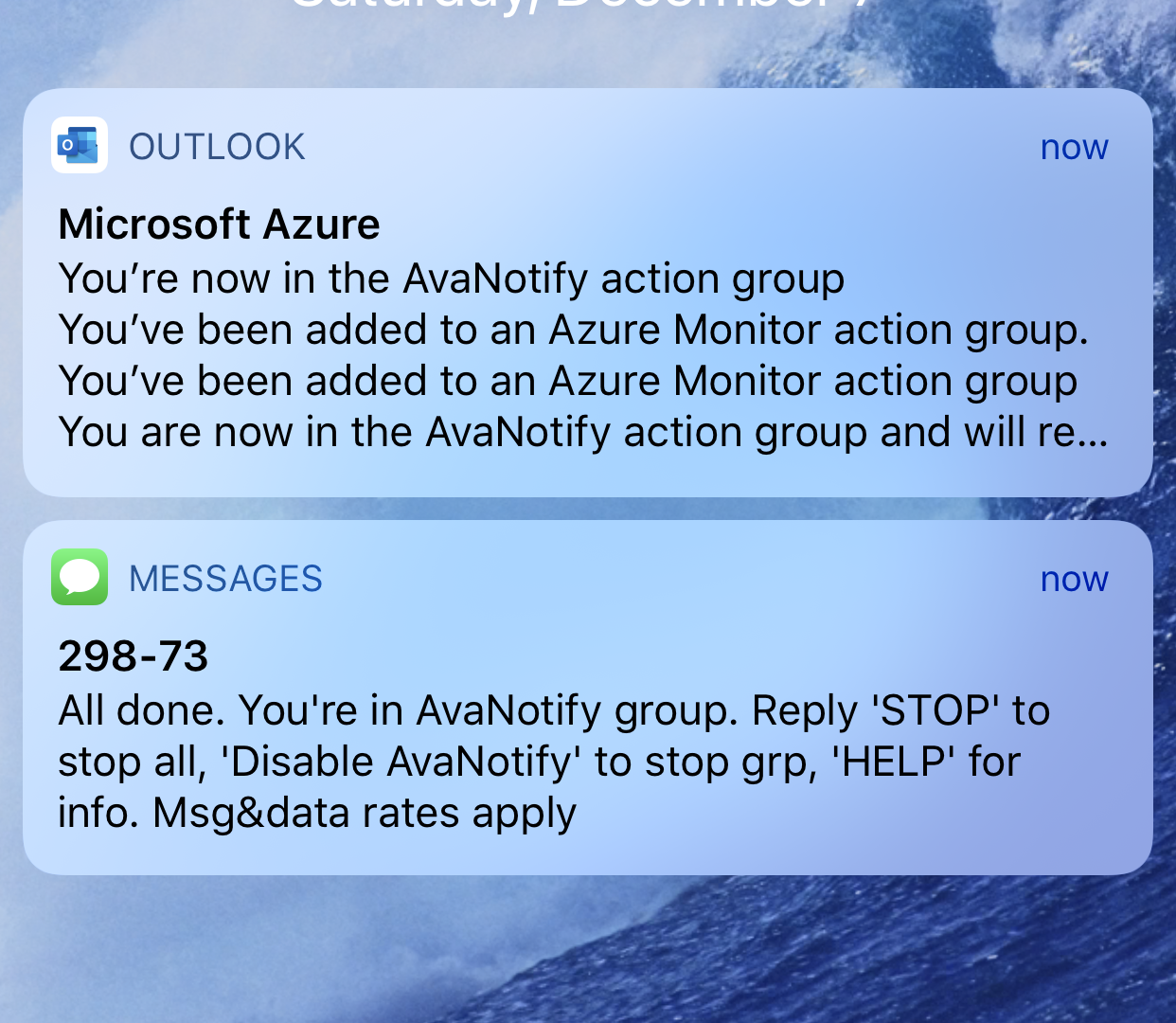Here’s something simple yet vital that I set up in one of my Azure subscriptions recently: Action Group Notifications.
Action Groups in Azure are re-usable objects capable of taking a variety of actions. In my example, I’ve set up a notification via text and email, but actions can also include Azure Functions, Logic Apps, webhooks, or ITSM notifications.
For example, you could have an action group that not only sends notifications, but also triggers a ticket in your ITSM solution and perhaps fires off a Logic App. Multiple actions may be triggered, hence the name “action group”.
To get there in my Azure portal, I went to Monitor, Alerts, Manage Action Groups.

Here’s my Action Group, “AvaNotify”.I have two actions, one each to send an email and an SMS (text message).
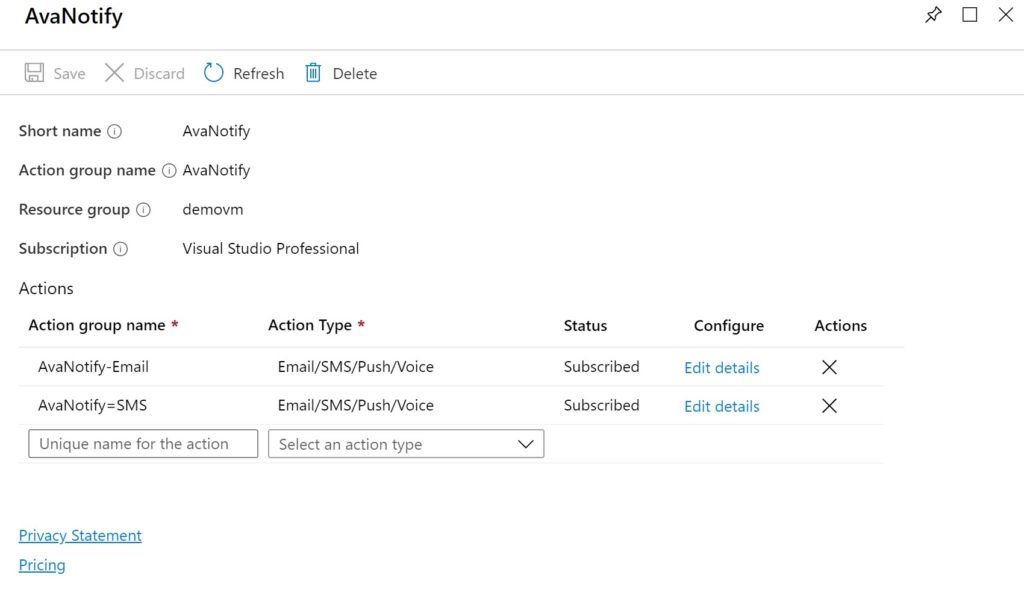
It’s pretty straightforward – enter the email address and/or phone number. You can include multiple destinations in a single action; I chose to break them up. In an enterprise setting, you might use a Team/Group shared mailbox, or if you’re kickin’ it old-school, a distribution list email address.
While I haven’t tried it yet, I find the Azure app push notification intriguing. The Azure mobile app is pretty solid, and if I were an IT Operations lead on the go, having an alert come in via the app, and logging in with my mobile, would be a great option to quickly take a look without having to run to the nearest computer.
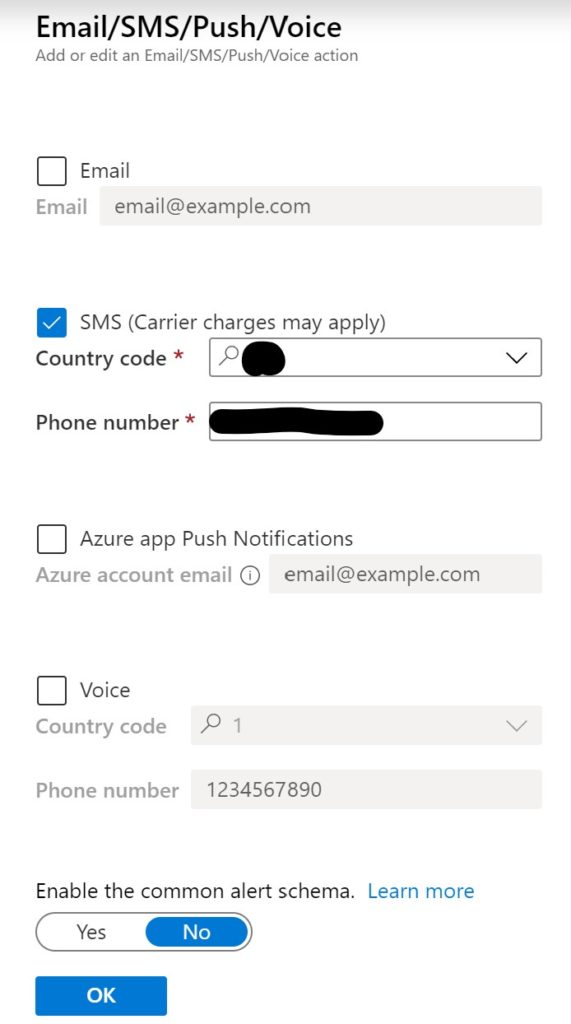
It’s worth knowing how pricing works for Action Groups. For my purposes, they’re pretty generous, but in an enterprise setting you’d want to know what your limits are for various actions. Scroll down to “Notifications” on the Pricing Page for details.
The Common Alert Schema isn’t something I’ve used; essentially Microsoft has created a new schema for various alerts to share, whereas originally they were each developed separately. Not all alert destinations are supported, so read up on it before implementing. That said, this is configurable at the action level, so it ought to be pretty easy to test in isolation.
In any case, even though I have nothing configured to trigger a notification, simply adding me gets me some notifications.
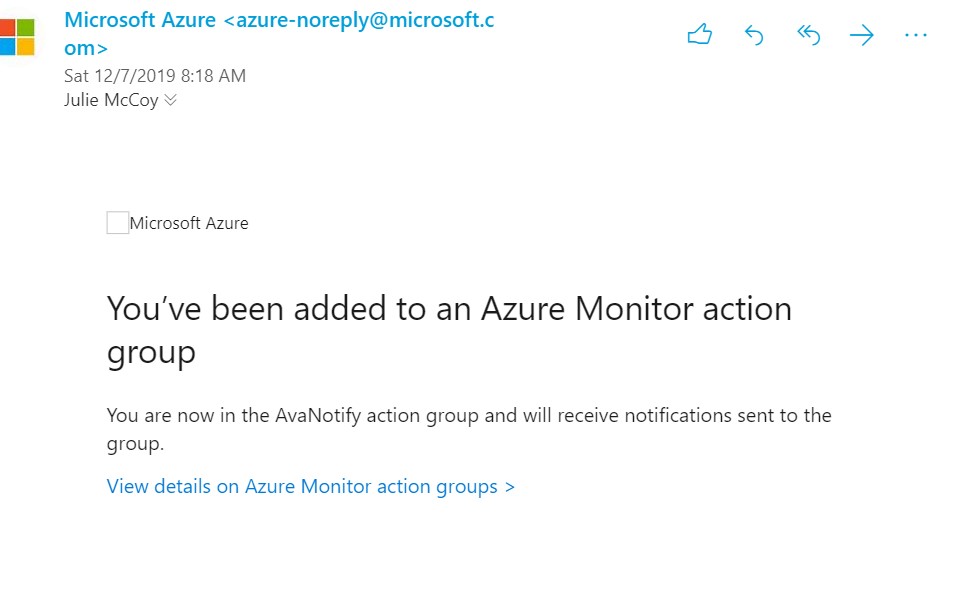
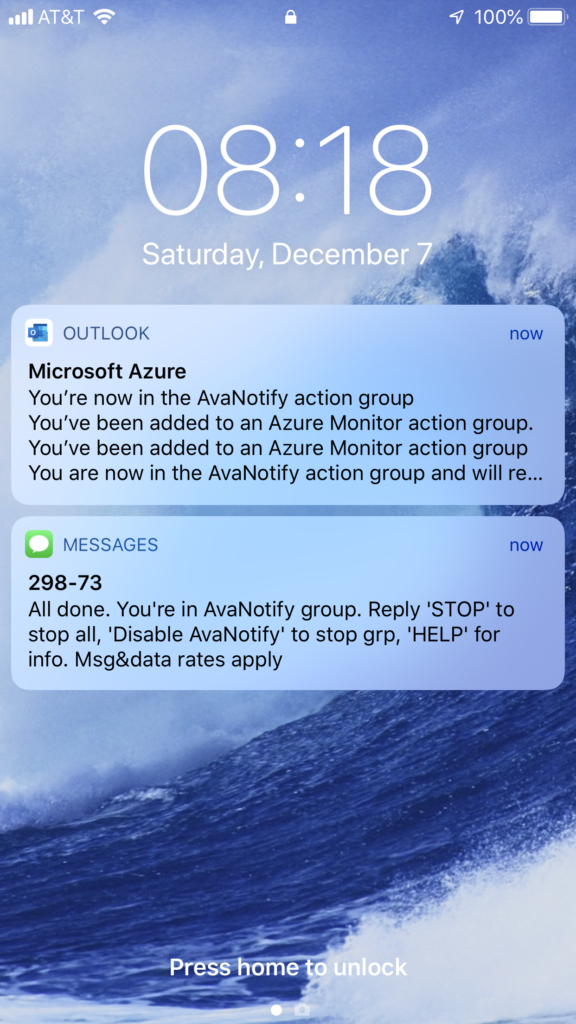
Top Tip for mobile users: Azure will only send notifications to you. How those notifications show up on your mobile device will depend on your device settings. For example, if you’ve set your email and text apps to not throw a notification on the lock screen, or a “Do Not Disturb” setting is active, you won’t necessarily see them.
Now that you’ve seen an action group, you might be wondering, what might trigger it? An easy example would be under Monitor –> Alerts, I create a New Alert Rule. Stepping through the setup wizard I choose my source and signal, then AvaNotify as my Action Group.
In this case, I created an Alert Rule to use AvaNotify whenever I de-allocate my Linux VM:
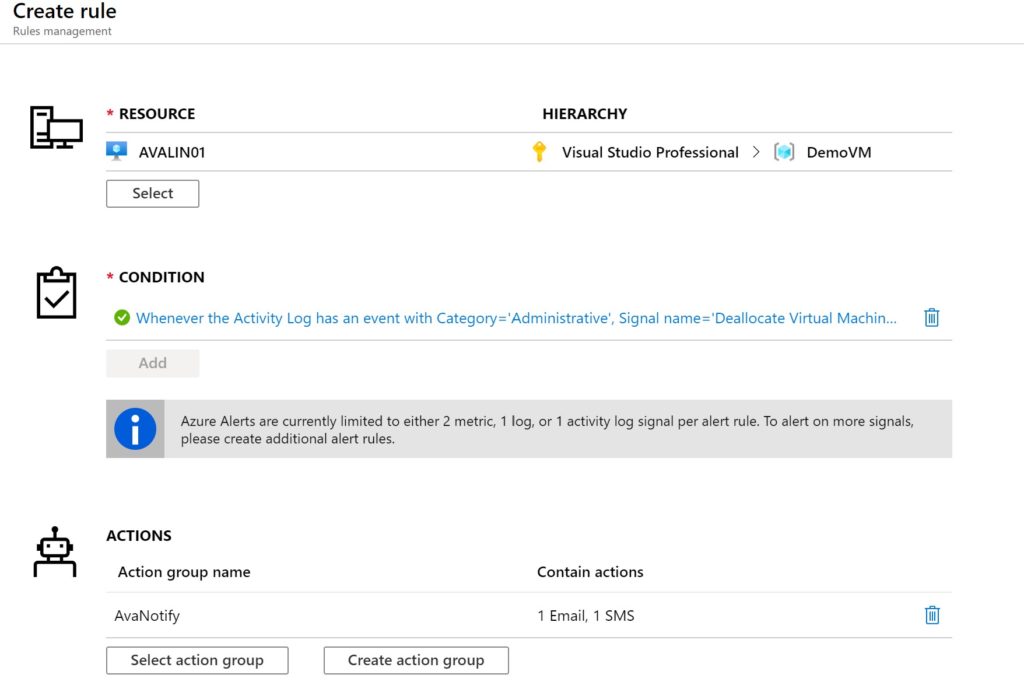
A deeper dive into Alert Rules will have to wait for another post.
To recap: Action Groups are re-usable objects to configure one or more actions to execute when triggered by an alert. They can be as simple as text/email/voice notifications, or as complex as triggering ITSM events and Azure automation resources. Action Groups are a simple but important resource to have in the tool set used by any Azure administrator.
